The first USS La Salle (AP-102) of the United States Navy was the lead ship of her class of transport ships in use during the latter part of World War II.
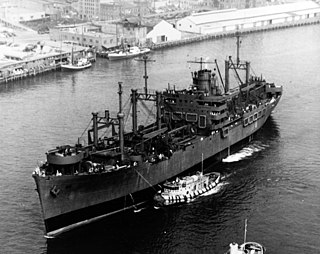
USS Sumter (APA-52) was a Sumter-class attack transport that served with the United States Navy from 1943 to 1946. She was subsequently sold into commercial service and was scrapped in 1978.

USS Bolivar (APA-34) was a Bayfield-class attack transport in service with the United States Navy from 1943 to 1946. She was then sold into commercial service and was scrapped in 1973.

USS Doyen (APA-1) was a Doyen-class attack transport in service with the United States Navy from 1943 to 1946. She was scrapped in 1973.
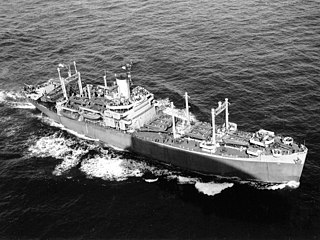
USS DuPage (AP-86/APA-41) was a Bayfield-class attack transport in service with the United States Navy from 1943 to 1946. She was then sold into commercial service and was scrapped in 1973.
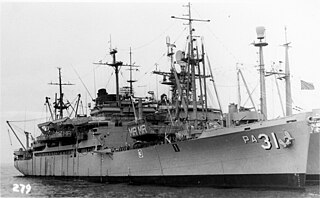
USS Monrovia (APA-31) was a Crescent City class attack transport of the United States Navy, built from a C-3 Delta commercial freighter design, and was named for the Birthplace of President James Monroe, located in Westmoreland County, Virginia.

USS Feland (APA-11) was a Doyen-class attack transport in service with the United States Navy from 1943 to 1946. She was scrapped in 1964.

USS James O'Hara (APA-90) was a Frederick Funston-class attack transport that served with the US Navy during World War II and later in the Korean War. The ship was named after a Continental Army officer who fought in the Revolutionary War and who later became Quartermaster General of the US Army.

USS Lamar (APA-47) was a Bayfield-class attack transport in service with the United States Navy from 1943 to 1946. She was sold into commercial service in 1948 and was scrapped in 1971.

USS Alpine (APA-92) was a Bayfield-class attack transport in service with the United States Navy from 1943 to 1946.She was sold into commercial service in 1947 and was scrapped in 1971.

USS Custer (AP-85/APA-40) was a Bayfield-class attack transport in service with the United States Navy from 1943 to 1946. She was sold into commercial service in 1948 and was scrapped in 1973.

USS Elmore (APA-42) was a Bayfield-class attack transport in service with the United States Navy from 1943 to 1946. She was then sold into commercial service and was scrapped in 1971.
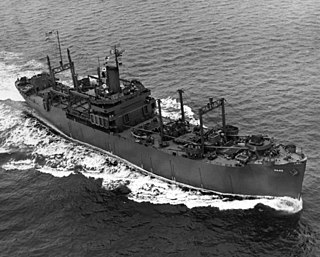
USS Fayette (APA-43) was a Bayfield-class attack transport that served with the United States Navy from 1943 to 1946. In 1947, she was sold into commercial service, where she served as SS Robin Gray until being scrapped in 1972.

USS Leon (APA-48) was a Bayfield-class attack transport in service with the United States Navy from 1944 to 1946. She was sold into commercial service in 1947 and was scrapped in 1971.

USS Knox (APA-46) was a Bayfield-class attack transport in service with the United States Navy from 1944 to 1946. in 1947, she was sold into commercial service and was finally scrapped in 1971.
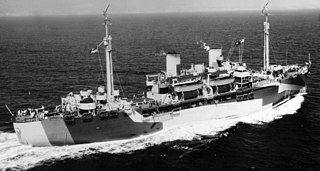
USS Appling (APA-58) was a Gilliam-class attack transport that served with the United States Navy from 1944 to 1946. She was scrapped in 1969.

USS Audrain (APA-59) was a Gilliam-class attack transport that served with the US Navy during World War II.

USS Wayne (APA-54) was a Sumter-class attack transport that served with the US Navy during World War II.
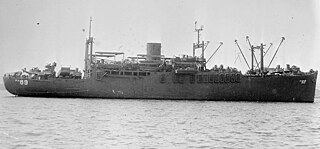
USS Frederick Funston (APA-89) was a Frederick Funston-class attack transport that served with the US Navy during World War II. Before serving as a Navy APA, she had been the US Army transport USAT Frederick Funston. After World War II, she was returned to the Army and operated as USAT Frederick Funston. Funston was among the seventy-two ships transferred to the Navy's Military Sea Transportation Service (MSTS) in the 1 March 1950 group and placed in service as USNS Frederick Funston (T-AP-178).

USS Harris (APA-2) was an Emergency Fleet Corporation Design 1029 ship launched for the United States Shipping Board (USSB) on 19 March 1921 by Bethlehem Shipbuilding Corporation, at Sparrows Point, Maryland as Pine Tree State. After operation by commercial lines for the USSB, during which the ship was renamed President Grant and operated commercially until laid up in the late 1930s.



















